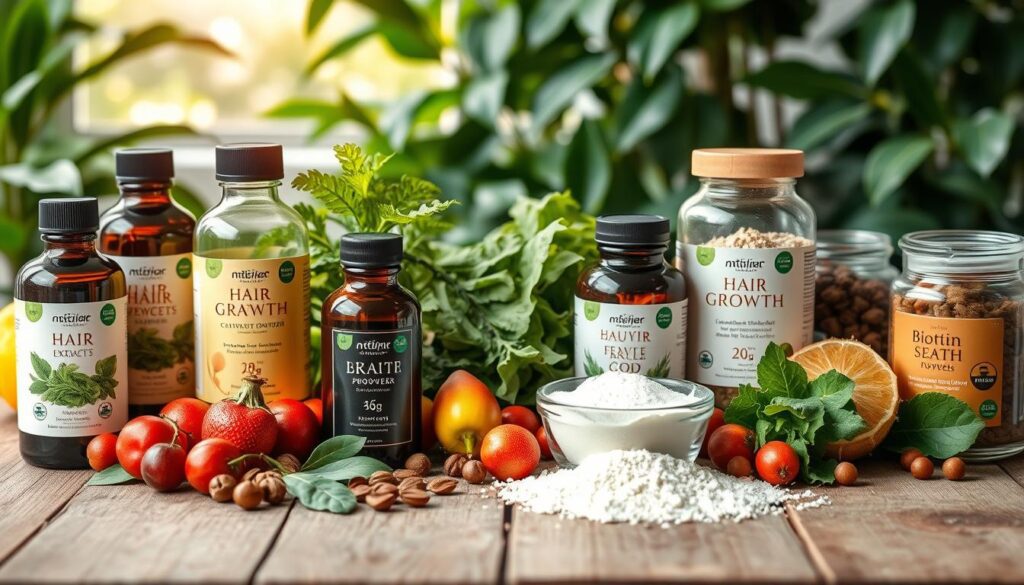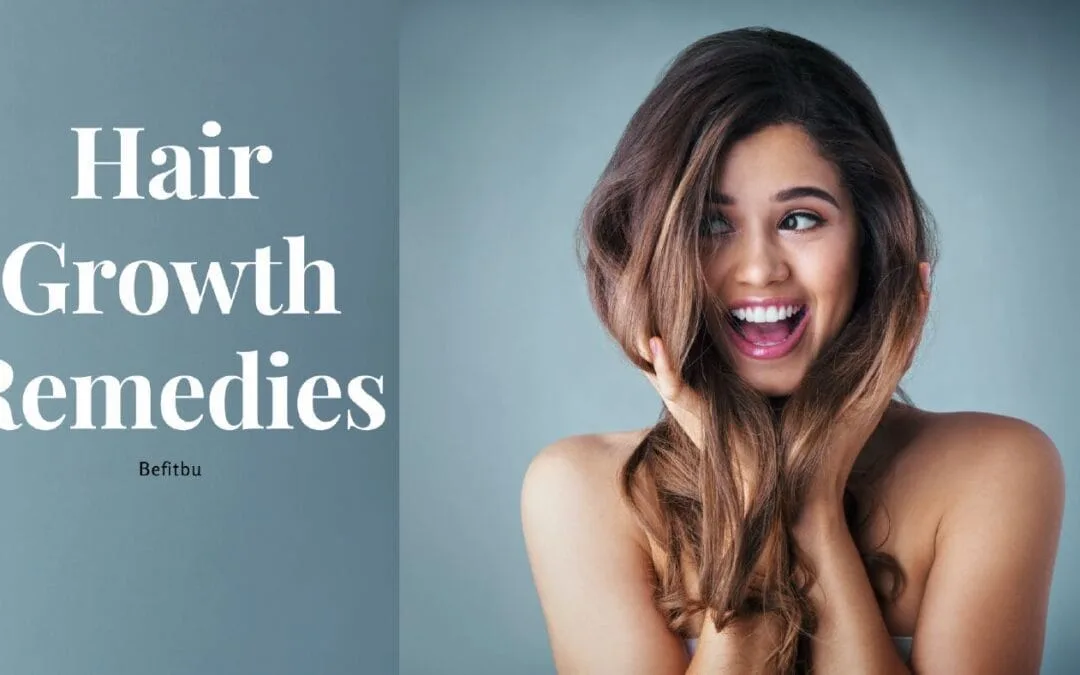Are you tired of having bald spots and thinning hair? Looking for a natural technique to regrow your hair? Our guide will help you get your hair back in just 3 weeks. You’ll learn about hair loss causes, growth cycles, and how to use natural methods for hair regrowth.
Key Takeaways
- Find out why your hair is falling out and fix it naturally
- Use important nutrients to feed your hair and make it grow
- See how natural oils and scalp massages can change your hair
- Make your own hair masks and treatments with kitchen stuff
- Make lifestyle adjustments to support healthy, strong hair growth.
Page Contents
- Understanding Hair Loss: Root Causes and Natural Solutions
- Essential Nutrients That Promote Hair Regrowth
- How to Regrow Hair Naturally in 3 Weeks
- Powerful Natural Oils for Hair Regeneration
- Scalp Massage Techniques for Stimulating Hair Growth
- Diet and Nutrition Plan for Healthy Hair Growth
- Natural Hair Masks and DIY Treatments
- Lifestyle Changes That Support Hair Regrowth
- Harmful Practices to Avoid During Hair Restoration
- Maintaining Results: Long-term Hair Care Strategy
- Natural Supplements for Enhanced Hair Growth
- Conclusion
- FAQs
Understanding Hair Loss: Root Causes and Natural Solutions
Hair loss can be frustrating and complex. It has many causes. From androgenetic alopecia to telogen effluvium, knowing the types is key. We’ll look at hair growth cycles and how lifestyle affects our hair.
Common Types of Hair Loss
Androgenetic alopecia, or pattern baldness, is common. It starts at the temples and crown. Telogen effluvium happens due to stress or body changes, causing more hair loss.
Alopecia areata is less common but serious. Patches of hair loss are a symptom of this autoimmune condition. The body attacks hair follicles, leading to bald spots.
The Science Behind Hair Growth Cycles
The three stages of the hair development cycle are telogen (resting), catagen (transition), and anagen (growing). Knowing these phases helps in fighting hair loss. In the anagen phase, hair grows. The catagen phase is a short transition to the telogen phase, where hair rests before falling out.
Environmental and Lifestyle Factors
Hair is harmed by things like pollution, the sun, and harsh hair care products. Stress, diet, and sleep also affect hair health. Changing these can help hair grow naturally.
Understanding hair loss and growth is the first step. We’ll look at natural ways and nutrients to help hair grow back.
Essential Nutrients That Promote Hair Regrowth
Healthy, vibrant hair starts from within. Certain nutrients are key for hair growth. They support hair follicles and help them grow back. Let’s look at the important vitamins and minerals for your hair.
Biotin: The Hair Growth Powerhouse
Vitamin B7, often known as biotin, is excellent for hair development. The protein keratin, which is present in skin, hair, and nails, is synthesized with its help. With enough biotin, hair gets stronger, breaks less, and grows more.
Iron: Combating Hair Loss
Iron deficiency can cause thinning and hair loss. Hair follicles need iron to get oxygen in order to flourish. Iron helps hair follicles get oxygen for growth. Keeping iron levels up can stop and even reverse hair loss.
Vitamin D: The Sunshine Vitamin
Vitamin D and hair health are connected. This vitamin helps the hair growth cycle and follicles. Low vitamin D can lead to more hair loss, making it key for hair health.
Zinc: The Hair Strengthener
Zinc makes hair strong. It helps oil glands, keeping the scalp and follicles healthy. Enough zinc for hair stops hair thinning and grows new, strong hair.
Eating these nutrients or taking supplements can greatly improve your hair. They address hair loss causes and provide what hair needs. This can bring back your hair’s natural shine and strength.
How to Regrow Hair Naturally in 3 Weeks
Getting your hair to grow back doesn’t have to take a long time. A 3-week plan can help you start growing thicker, healthier hair. Here are the steps to follow for natural hair regrowth.
Week One: Foundation and Preparation
The first week is all about getting ready for your hair’s comeback. Start by fixing any scalp problems and making sure your body gets the right nutrients for hair growth. Use scalp massages with good oils and eat foods full of vitamins and minerals that help hair.
Week Two: Intensive Treatment Phase
In the second week, you’ll do more to help your hair grow. Use deep-conditioning hair masks, hot oil treatments, and scalp scrubs to feed your hair follicles. Doing these treatments often will start your natural hair regrowth timeline.
Week Three: Maintenance and Results
By the third week, keep up what you’ve been doing to keep your hair growing. Keep doing scalp massages, deep conditioning, and eating well to support your 3-week hair growth plan. By the end of this week, you should see your hair starting to look better, setting you up for long-term hair health.
Remember, being consistent is important. By sticking to this natural hair regrowth timeline, you’ll be on your way to having the lush, vibrant hair you want.
Powerful Natural Oils for Hair Regeneration
Certain essential oils are great for hair growth. Castor oil is famous for its benefits. Peppermint oil helps the scalp. These oils can make your hair look better and grow stronger.
Castor Oil: The Hair Growth Miracle
Castor oil is loved for hair care. It has ricinoleic acid, which helps hair grow. It makes hair follicles strong and can even make hair thicker.
Rosemary Oil: A Boon for Hair Health
Rosemary oil is also great for hair. It boosts scalp health and makes hair thicker. It also makes hair shine more.
Peppermint Oil: Stimulating Scalp Circulation
Peppermint oil is refreshing for hair. It has menthol that makes the scalp tingle. This boosts blood flow and helps hair grow.
Use these oils as part of your hair care. Follow the right way to use them for best results. Regular use and a healthy lifestyle can make your hair amazing.
Scalp Massage Techniques for Stimulating Hair Growth
Scalp massages are a great way to help your hair grow. They improve blood flow and wake up hair follicles. This means your hair gets the nutrients it needs to be strong and thick.
Learn how to do a scalp massage right. Find out the best time and tools to use for the best results.
Proper Massage Methods
Use your fingertips for gentle, circular motions. Press lightly to medium, but don’t hurt your skin. Massage all over your scalp, including the temples, crown, and back of your neck.
Do this for 5-10 minutes to see the best results.
Best Times for Scalp Massage
- Before shampooing: This helps get rid of dirt and oil.
- While shampooing: It boosts blood flow and spreads shampoo well.
- As a standalone treatment: Spend 10-15 minutes just on scalp massage for a special treat.
Tools and Accessories
While your fingers work well, special tools can make it even better. Think about getting a silicone scalp massager or a dry brushing tool. They help exfoliate and wake up your scalp.
| Tool | Benefits |
|---|---|
| Silicone Scalp Massager | Improves blood circulation, dislodges buildup, and feels soothing on the scalp. |
| Dry Brushing Tool | Exfoliates the scalp, promotes lymphatic drainage, and prepares the scalp for optimal product absorption. |
Adding scalp massage to your hair care can make your hair grow stronger. It will look and feel amazing.
Diet and Nutrition Plan for Healthy Hair Growth
To get beautiful hair, you need to feed your body well. Eating hair growth foods and a diet rich in protein is key. Here are the nutrients and meals that help your hair grow strong.
Power Up with Protein
Protein is vital for hair growth. Eat foods high in protein:
- Lean meats like chicken, turkey, and fish
- Eggs and dairy products
- Legumes, nuts, and seeds
Boost with Vitamins and Minerals
Vitamins and minerals keep your hair healthy. Add these foods to your diet:
- Foods high in vitamin C, such as leafy greens, bell peppers, and citrus fruits
- Biotin-packed foods such as eggs, avocados, and sweet potatoes
- Iron-rich options like red meat, lentils, and spinach
- Zinc-containing foods like seafood, nuts, and whole grains
| Nutrient | Hair Growth Benefits | Top Food Sources |
|---|---|---|
| Protein | Promotes hair growth and strength | Lean meats, eggs, legumes |
| Vitamin C | Supports collagen production for hair follicle health | Citrus fruits, bell peppers, leafy greens |
| Biotin | Stimulates keratin production for hair growth | Eggs, avocados, sweet potatoes |
| Iron | Ensures adequate blood flow to the scalp | Red meat, lentils, spinach |
| Zinc | Helps maintain oil glands and hair follicles | Seafood, nuts, whole grains |
Eating hair growth foods and a protein-rich diet will help your hair grow. You’ll achieve the healthy, gorgeous hair you desire.
Natural Hair Masks and DIY Treatments
Discover the power of nature for your hair. Use homemade hair masks and DIY treatments. They are made with herbs and kitchen items. These natural solutions help with dryness, breakage, and dull hair.
Herbal Hair Masks
Herbs can make your hair masks special. Aloe vera and green tea both soothe the scalp and provide antioxidants. Fenugreek and coconut oil combine to condition and provide shine.
Kitchen Ingredient Solutions
Find great DIY hair treatments in your kitchen.Hair is hydrated and repaired with an avocado and honey mask. Hair growth is stimulated by a mixture of olive oil and onions. These natural hair treatments use common items to improve your hair.
Application Guidelines
- Apply the mask from root to tip, massaging it gently into the scalp for improved circulation.
- Cover your hair with a shower cap or warm towel to help the ingredients penetrate deeper.
- For best results, leave the mask on for 20-30 minutes before rinsing thoroughly.
- Incorporate these DIY hair masks into your routine 1-2 times per week for optimal hair growth and condition.
Use nature’s power for amazing hair. Try these homemade hair growth remedies. They make your hair look great and feel healthy. Enjoy these nourishing, easy-to-make treatments.
Lifestyle Changes That Support Hair Regrowth
Getting healthy, vibrant hair is more than just using the right products. It’s also about your lifestyle and well-being. By changing a few daily habits, you can help your hair grow better.
Manage Stress for Hair Health
Stress can hurt your hair. It can mess with your body’s hormones, making you lose more hair. Try meditation, yoga, or deep breathing to stay calm and balanced.
Prioritize Quality Sleep
Sleep is key for health, including hair health. Try to sleep 7-9 hours each night. This helps your body grow healthy hair.
Get Moving for Hair Regrowth
Exercise is good for your heart and hair. It stimulates blood flow and delivers nutrients to your scalp. For ideal effects, combine cardio, weight training, and flexibility workouts.
These lifestyle changes will help your hair grow strong and healthy. Remember, being consistent is important. Start slowly and keep going for lasting results.

Harmful Practices to Avoid During Hair Restoration
As you work to grow your hair back, stay away from bad practices. These include common hair care mistakes, harmful chemical treatments, and bad styling habits. Knowing what to avoid is as key as doing the right things.
Common Hair Care Mistakes
Everyday hair care can hurt your hair and scalp. Here are some things to avoid:
- Excessive heat styling: Use hot tools like hairdryers and straighteners less. They may cause your hair to become dry and damaged.
- Aggressive brushing and combing: Be gentle when you brush and comb your hair. This helps prevent breakage and split ends.
- Overwashing: Excessive washing might cause your hair to become dry.
Chemical Treatments to Skip
Stay away from harmful hair treatments during your hair restoration. Here are some to avoid:
- Hair dyes and bleaches: These chemicals can really hurt your hair’s health and strength.
- Perms and relaxers: The chemicals in these treatments can damage your hair and scalp a lot.
- Hair straightening treatments: The heat and chemicals in these treatments can also harm your hair.
Styling Habits to Change
Some styling habits can stop your hair from growing and staying healthy. Here’s what to change:
- Tight hairstyles: Don’t wear your hair in tight buns or ponytails. They can hurt your hair and scalp.
- Excessive use of hair accessories: Use hair clips and headbands less. They can pull on your hair and scalp.
- Sleeping on damp hair: Don’t let your hair dry on your pillow. It can get tangled and break.
By avoiding these bad practices, you’ll help your hair grow back and stay healthy.
Maintaining Results: Long-term Hair Care Strategy
Getting healthy, sustainable hair growth is a long journey. To keep your hair looking great, you need a long-term hair maintenance routine. This plan will keep your hair strong and stop hair loss from coming back.
Getting regular trims is key to your hair maintenance routine. Trims cut off split ends and help your hair grow. To maintain the health of your hair, try to get a trim every 6 to 8 weeks.
How you wash your hair matters a lot. Don’t wash it too much, as it can dry out and break. Use gentle, sulfate-free shampoos and warm water to keep your hair shiny and strong.
Keeping your diet rich in nutrients is also important for sustainable hair growth. Keep eating foods that helped your hair grow before. A diet full of vitamins and proteins will help your hair stay healthy for a long time.
With this detailed hair maintenance routine, you can keep your hair looking amazing. Enjoy your healthy, shiny hair for many years.
Natural Supplements for Enhanced Hair Growth
Natural supplements can help your hair grow strong and healthy. They include important vitamins and herbal extracts. These gentle remedies help fix thinning, shedding, and slow growth.
Here are some top natural supplements for your hair:
- Hair growth vitamins – Biotin, vitamin C, and zinc help hair follicles. They make your hair stronger and thicker.
- Herbal supplements for hair – Saw palmetto, ginger, and ginkgo biloba boost circulation. They nourish the scalp for new hair.
- Collagen for hair health – Collagen makes hair strong and elastic. It helps prevent breakage and keeps hair healthy.
Adding natural supplements to your hair care is a good idea. Just remember to follow the right amounts. Talk to a doctor, especially if you have health issues. With time and effort, these natural options can make your hair look amazing.

Conclusion
We hope you learned a lot about growing your hair naturally. You now know how to start your hair growth journey. By using the tips from this guide, you can get the healthy hair you want.
Remember, growing hair naturally takes time and effort. You need to be patient and keep up with a healthy lifestyle. Use the right foods, oils, and scalp care to make your hair strong and shiny.
Your hard work will show in your hair’s health. You’ll feel more confident and beautiful with your new hair. Here’s to your success and a lifetime of gorgeous hair!
FAQs
What are the common types of hair loss?
There are several common types of hair loss. Androgenetic alopecia is one, also known as male or female pattern baldness. Telogen effluvium is when you shed a lot of hair.
How does the hair growth cycle work?
Hair grows in a cycle with three phases. The first is anagen, where hair grows. Then comes catagen, a short transition phase. Finally, there’s telogen, the resting phase. Knowing these phases helps keep your hair healthy.
Which lifestyle and environmental factors can affect the health of hair?
Pollution, UV rays, and chemicals can harm your hair. Stress, bad nutrition, and not enough sleep also affect hair health.These causes might cause hair loss and slow-growing hair.
What are the essential nutrients for promoting hair regrowth?
Important nutrients for hair growth include biotin, iron, vitamin D, zinc, and omega-3 fatty acids. These help feed your hair follicles and encourage new hair growth.
What is the 3-week natural hair regrowth plan?
This plan has three weeks. Week 1 is for getting ready. Week 2 is for deep treatment. Week 3 is for keeping up the good work and seeing results.
What are the benefits of using natural oils for hair regeneration?
Natural oils like castor, rosemary, peppermint, and coconut oil help a lot. They improve blood flow, reduce inflammation, and feed your scalp and hair follicles.
How can scalp massage techniques stimulate hair growth?
Scalp massage boosts blood flow and wakes up your hair follicles. It helps your hair grow. Massaging at the right times and using tools like silicone massagers can make it even better.
What foods should be included in a hair growth diet plan?
You must include foods rich in protein, vitamins, minerals, and antioxidants. Include lean meats, eggs, nuts, leafy greens, berries, and foods like salmon that are full of omega-3s.
What are some effective natural hair masks and DIY treatments?
Homemade hair masks with herbs, oils, and kitchen stuff can really help. Try ones with aloe vera, honey, and rosemary for a boost.
What lifestyle changes can support hair regrowth?
To help your hair grow, manage stress, sleep well, and exercise often. These changes can make your hair healthier and grow better.
What hair care practices should be avoided during the hair restoration process?
Avoid using too much heat, harsh chemicals, and tight hairstyles. These can damage your hair and slow down hair growth.
How can I maintain the results of my natural hair regrowth journey?
Keep your hair healthy long-term by sticking to a good hair care routine. Get regular trims, wash your hair right, and keep eating well.
What natural supplements can enhance hair growth?
Supplements like biotin, collagen, and herbal extracts like saw palmetto and ginseng can help. They support healthy hair growth.

